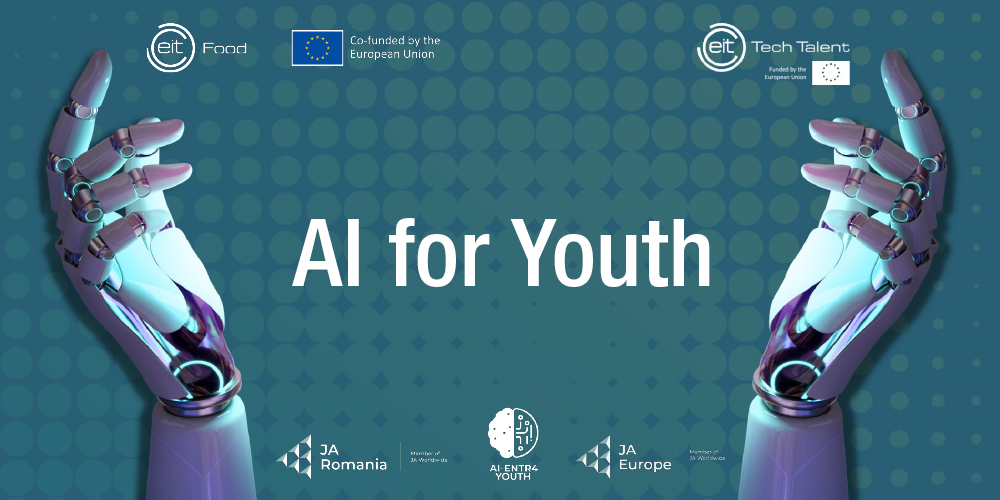AI for Youth
supported by:

AI for Youth is a European project run with the support of the European Institute of Innovation and Technology (EIT Food), as part of the EIT Deep Tech Talent Initiative. It targets high school students and aims to lay the foundations for the training of future deep tech professionals, including professionals working in the field of artificial intelligence (AI).
PROJECT OBJECTIVE
AI for Youth combines basic AI and programming concepts with elements of entrepreneurship and project management to guide students towards the development of innovative ideas that highlight the use of artificial intelligence to streamline agri-food resource consumption, enhance food safety and security, and digitize the supply chain.
EDUCATIONAL CONTENT
AI for Youth offers 23 learning modules through which students explore the lifecycle of an AI project, discover data literacy, explore the concept of "computer vision" and start analyzing the link between problems, solutions and opportunities (addressing a problem in the agri-food sector).
The 23 modules are organized on 2 levels of complexity:
- Code version, aimed at students and teachers who have knowledge of programming and IT&C, advanced digital skills and a good understanding of existing AI tools. It includes the no-code version and another 20 hours of learning in which students will use the Python programming language and other advanced software programs (Jupyter Notebook, Streamlit, CNN Architectures, etc.)
The practical part of the project includes events organized in the international JA Innovation Day format, where students propose innovative ideas highlighting the use of artificial intelligence to make agri-food resource consumption more efficient. Students following the no-code learning pathway create a dataset, an image library and refine the model, while students following the code pathway use programming elements to create an AI prototype.
In Europe, the project is coordinated by JA Europe and implemented by Junior Achievement (JA) offices in 10 countries: Romania, Albania, Bulgaria, Czech Republic, France, Greece, Italy, Portugal, Spain, and Ukraine.

